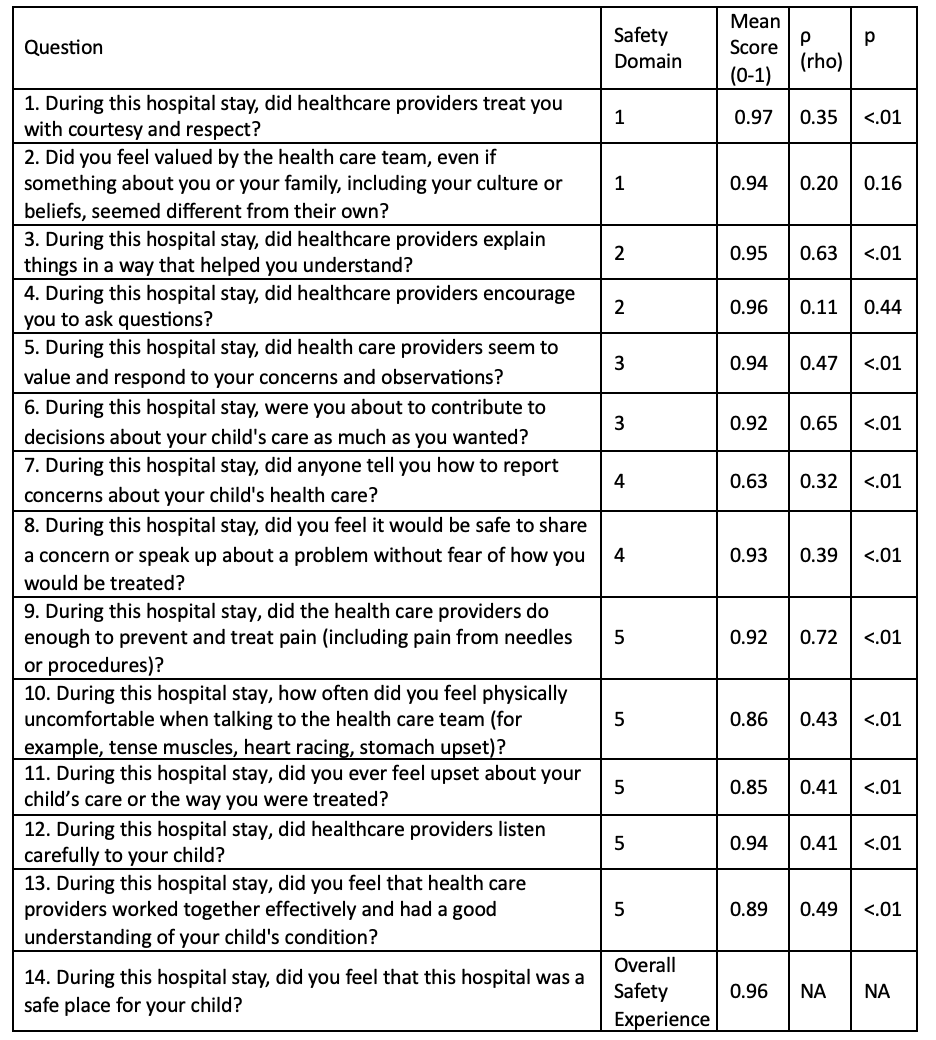Quality Improvement/Patient Safety 1
Session: Quality Improvement/Patient Safety 1
002 - Codesign of a Patient Safety Experience Assessment Tool for Families of Admitted Pediatric Patients
Friday, April 25, 2025
5:30pm - 7:45pm HST
Publication Number: 2.4521
Jena Shank, University of Calgary, Airdrie, AB, Canada; Consuelo Ong, AHS, Calgary, AB, Canada; Melissa Monaghan, University of Calgary, Calgary, AB, Canada; Sandra Oelhaupl, Alberta Health Services, Calgary, AB, Canada; Jennifer Thull-Freedman, University of Calgary, Calgary, AB, Canada
- JS
Jena Shank, MSc (she/her/hers)
Medical Student
University of Calgary, Alberta, Canada
Presenting Author(s)
Background: Improving hospital safety culture is a priority of healthcare organizations, though measurement typically focuses on the experience of healthcare providers. Little is known about how families experience safety and what they view as priorities. Previous work by our team demonstrated that caregiver perceptions of safety extend beyond freedom from harm and place a high value on psychological safety. There are no published patient surveys that measure safety experience for families of admitted pediatric patients.
Objective: To codesign, administer, and validate a survey of patient safety experience for families of admitted pediatric patients.
Design/Methods: Using an iterative co-design process, members of the co-design team including parents and healthcare providers selected and questions from existing patient experience surveys that related to safety. Selected questions were adapted for local context and shared among parent members of the Safety Family Advisory Committee to provide feedback on question content and clarity and classify relevance of questions to their experience of feeling safe. The final version was then tested with primary caregivers of admitted pediatric patients. Surveys were analyzed descriptively, and Spearman rank correlation was used to measure correlation between each question, as well as total survey score, with overall report of feeling safe while admitted.
Results: The final survey included fourteen questions covering psychological safety, other safety priorities, and overall safety experience. There were 2 questions for each of 4 domains of psychological safety. Fifty-one parent caregivers completed the survey. Patient demographics are reported in Table 1. There was a significant positive association between the total score of psychological safety questions and overall safety experience (rho = .47, p < .01) and between the total of all safety questions and overall safety experience (rho = .52, p < .01). The average score and Spearman correlation for each question is reported in Table 2.
Conclusion(s): This codesigned patient safety experience survey had a statistically significant moderate correlation with report of overall safety experience. Use of the survey will ensure that measurement of how families experience safety will be conducted in a manner that aligns with their priorities and values and can be used to measure success of future improvement efforts.
Table 1. Participant and Pediatric Patient Demographics
.png) *Other languages included Arabic, Russian, Spanish, Punjabi, Urdu, Filipino, Cantonese, Tigrigna, Swahili, German
*Other languages included Arabic, Russian, Spanish, Punjabi, Urdu, Filipino, Cantonese, Tigrigna, Swahili, GermanTable 2. Safety Survey Average Question Score and Correlation with Overall Safety Experience
 Psychological Safety Domains (1-4): 1 = Inclusion Safety; 2 = Learner Safety; 3 = Contributor Safety; 4 = Challenger Safety; 5 = Other
Psychological Safety Domains (1-4): 1 = Inclusion Safety; 2 = Learner Safety; 3 = Contributor Safety; 4 = Challenger Safety; 5 = OtherNA = Not applicable


